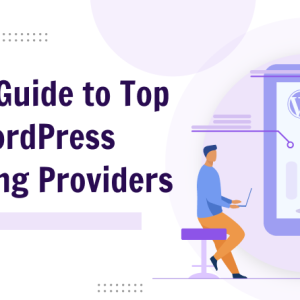Organisations always look for ways to increase productivity, produce high-quality products, and be flexible in changing consumer demands. The Scaled Agile Framework (SAFe) is useful in this situation. SAFe is a thorough and adaptable technique that aids organisations’ widespread adoption of lean-agile practices. It offers a structured method for coordinating development, teamwork, and delivery across numerous teams, allowing businesses to become more agile while keeping an eye on commercial results. This blog will explore the advantages of SAFe Course and answer the question “What is SAFe”.
Table of Contents
Why Opt for a SAFe Course?
They understand the importance of learning through SAFe training before diving into the benefits of applying SAFe. The principles, practise, and responsibilities specified by SAFe are thoroughly explored in these courses, giving participants the knowledge and abilities to lead, facilitate, and apply the framework inside their organisation. A SAFe course offers an organised learning path, assisting professionals in comprehending the subtleties of SAFe, its implementation techniques, and its advantages.
Advantages of Implementing SAFe
The following are some benefits of using the Scaled Agile Framework (SAFe) for business growth:
Enhanced Collaboration and Alignment
The increased communication and alignment among diverse teams is one of the main benefits of implementing SAFe. Different departments sometimes operate in isolation in large organisations, resulting in inefficiencies, misunderstandings, and competing goals. Cross-functional teams are emphasised by SAFe, ensuring that employees from several departments work together fluidly to achieve a single objective. This alignment reduces delays, improves communication, and encourages a shared ownership attitude, which results in quicker and more efficient development cycles.
Faster Time-to-Market
The modern marketplace places a premium on quickness. Businesses that can introduce new features and goods to the market swiftly enjoy a huge competitive advantage. SAFe streamlines the development process to increase time-to-market. It accomplishes this by segmenting complicated tasks into smaller, more manageable units known as iterations. This iterative methodology ensures that useful products are constantly supplied, enabling businesses to get early client feedback and make the required adjustments. As a result, there is less chance of producing goods that are in line with consumer demands.
Improved Quality and Predictability
Success is built on quality, so SAFe emphasises it so much. SAFe ensures that code is adequately tested, evaluated, and incorporated into the main codebase by utilising continuous integration and continuous delivery (CI/CD) practices. As a result, the product is of greater quality and has fewer flaws. Furthermore, SAFe’s focus on decentralised decision-making and openness guarantees that potential problems are handled early, improving predictability and minimising last-minute interruptions.
Optimized Resource Utilization
Lean-agile leadership, which emphasises maximising resource utilisation and eradicating inefficient practices, is a concept promoted by SAFe. With the help of this strategy, organisations may distribute resources more wisely and cut down on bottlenecks and idle time. Companies can increase production levels without overtaxing workers by identifying and eliminating inefficiencies. This enhances the workflow as a whole and promotes a constant improvement culture inside the company.
Scalability and Flexibility
Businesses must scale up their procedures and methods as they expand. The organised framework SAFe provides can accommodate an organization’s unique needs and scale. SAFe recommends expanding agile practices without losing sight of the fundamental ideas, regardless of whether an organisation has a few teams or numerous business units. With this flexibility, businesses can remain flexible as they grow and react to shifting market dynamics and consumer preferences.
Employee Engagement and Empowerment
Success depends on employee involvement and satisfaction. SAFe promotes a culture of ownership, empowerment, and collaboration. Team members’ active participation in decision-making processes produces better solutions and heightens their sense of accountability and involvement. Employees become more invested in the company’s success as they become aware of the influence of their work and have a say in moulding outcomes.
Alignment with Business Objectives
SAFe’s primary goal is to match development initiatives with the organisation’s strategic objectives. Organisations may ensure that every project, feature, or improvement is directly related to providing value to customers and the bottom line by applying SAFe. This alignment lowers the possibility of working on initiatives that don’t advance the organization’s overall goals, ultimately resulting in better resource allocation and decision-making.
Conclusion
The many benefits of deploying the Scaled Agile Framework (SAFe) can greatly impact an organization’s development and success. SAFe offers a structured method for attaining agility at scale, from higher quality and accelerated time-to-market to improved collaboration and optimised resource use. Businesses may confidently negotiate the complexity of the contemporary business world and produce significant commercial outcomes by investing in a SAFe course and embracing its concepts.





